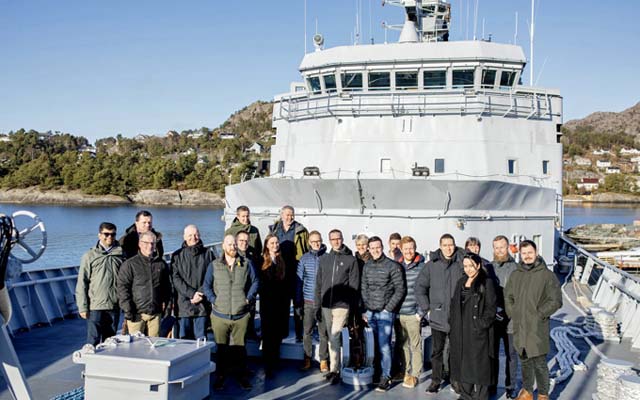To help address the current emission challenges facing the shipping industry, the EU has granted €7,8 million to the Steesmat project, aimed at developing ground-breaking power distribution systems for the zero-emission ships of the future.
Spearheaded by Norway’s Maritime CleanTech, 13 European partners will collaborate on the development of an innovative power distribution system tailored to the needs of tomorrow’s emission-free vessels. This technology will simplify the integration of modern green energy sources while optimising the efficiency of existing solutions. The project is expected to drive substantial emissions reductions across the maritime sector.
Ada M. Jakobsen, CEO Maritime Cleantech, said: “The Norwegian maritime industry is a global leader in green solutions, and this project represents another technological leap forward. The EU funding enables us to develop solutions that not only cut emissions but also streamline the adoption of sustainable energy sources. I am proud of our partners, who are working together to create a more efficient and climate-friendly shipping industry.”
The newly launched Steesmat project will develop an innovative power system based on medium voltage direct current (MVDC), replacing today’s conventional alternating current (AC) systems. By enabling engines to operate more efficiently at variable speeds, the system will facilitate the seamless integration of multiple renewable energy sources on large vessels, including batteries, solar panels, fuel cells, and wind turbines. The Steesmat system will help reduce vessel weight and overall energy consumption. With the potential to cut emissions by up to 40%, this represents a critical technological breakthrough, positioning European industries at the forefront of sustainable maritime innovation.
A former Norwegian Coast Guard vessel, KV Senja—now renamed RV North Star and made available through the Sustainable Energy Catapult Centre—will serve as a floating laboratory for the project. The ship will be outfitted with the new MVDC system to be tested under actual sea conditions.
Willie Wågen, CEO Sustainable Energy Catapult Centre, said: “We are excited to leverage our test facilities to develop new solutions that will help reduce emissions from global shipping. The technology will first be tested at our onshore facility before being demonstrated at sea aboard the RV North Star.”
Magnus Hortans, Senior Research Engineer, Danfoss, one of the partner companies, said: “It is exciting to be part of this collaboration and technical development of novel marine electrification systems. Together with the project consortium we are aiming for commercialisation of the new technology by 2029, which is a great target.”
Image: Steesmat consortium members onboard the ‘RV North Star’ (source: Danfoss)



